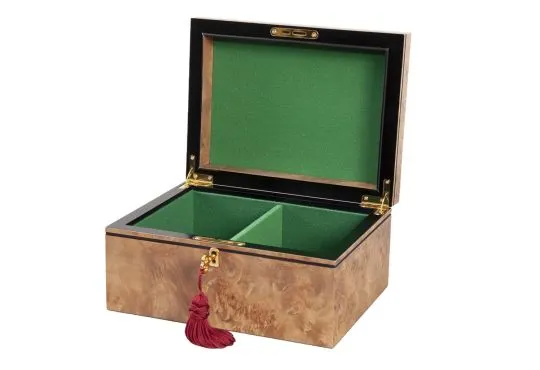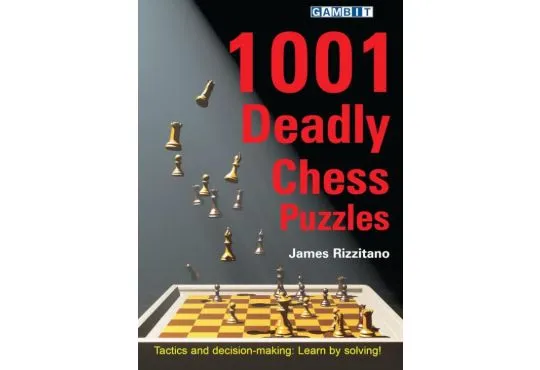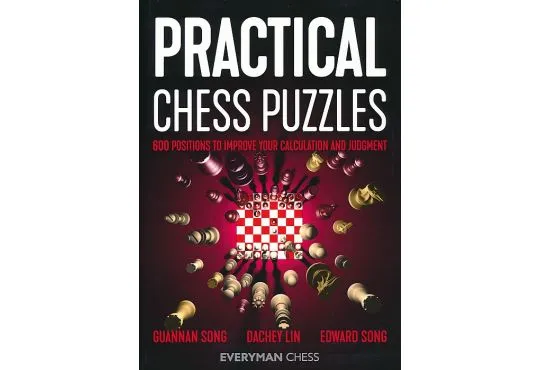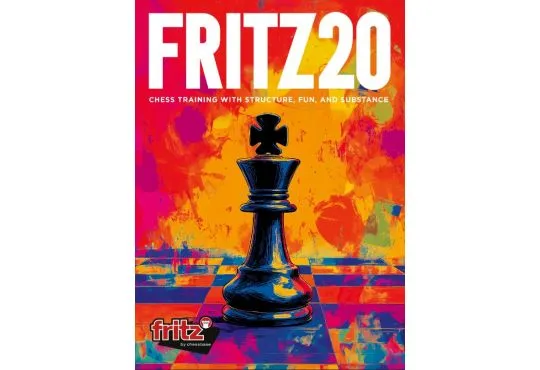Your Complete Guide to Chess Puzzles
If you wanted to reach your chess improvement goal, but you could only pick one method of study or practice, doing chess puzzles would be the best use of time. Chess puzzles can teach you tactics, patterns, and even strategy. Solving puzzles should be a significant component of any player's chess training, as it helps improve their pattern recognition and chess strategy, ultimately leading to more wins in your games.

Table of contents
What Are Chess Puzzles?
If you are brand new to chess, you may be unfamiliar with the term “chess puzzle,” or you may only know it as something that grandmasters can solve in seconds. They are moments from games where you have to find the best move. Sometimes it is just a one-move answer, but it can also be a forced variation of two, three, four, or even more moves. The puzzles are typically critical moments from games, offering an opportunity to find a checkmate, a tactic, or even a defensive move. But why do we bother doing chess puzzles?

Why Chess Puzzles Matter for Chess Players
Chess is a game of patterns. Learning those patterns and repeating them is akin to a musician learning a scale by playing it over and over until they develop muscle memory. Spotting a fork during an actual game will happen much more easily if you have practiced that pattern by doing hundreds of chess puzzles. Tactical vision can be developed and trained in that way, and you will spot the moves faster and faster.. There are still elements of strategy that need to be learned, but if you can master patterns and tactics through chess puzzles, you will jump hundreds and hundreds of ELO points.
How to Use Chess Puzzles in Your Chess Training
If chess puzzles are that important, then how should you implement them into your chess training? There are a few different ways that you can do chess puzzles, but whatever they are, you will find the most improvement through consistency and taking your time to calculate. If you are brand new to chess, grabbing a book like Everyone’s First Chess Workbook can be a great way to drill and actually learn those patterns for the first time. If you are a more experienced player, I still think that doing a workbook like that can be a useful barometer, serving as a set of smaller chess tests to see how quickly you are spotting basic tactics. Generally, you want to include a regular and consistent amount of chess puzzles in your training.
-
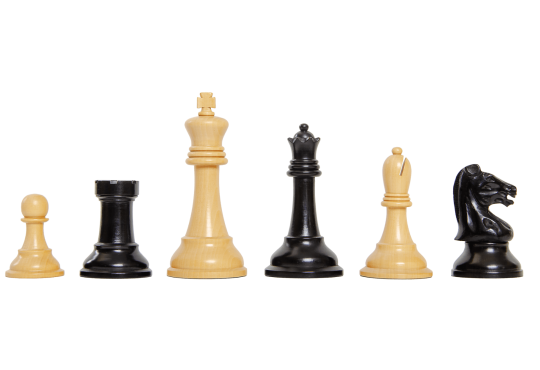 Free Worldwide Shipping
The DGT Projects Enabled Electronic Chess Pieces - Drueke Players Choice Series - 3.75" King
Free Worldwide Shipping
The DGT Projects Enabled Electronic Chess Pieces - Drueke Players Choice Series - 3.75" KingStarting at $559.00
To $1,828.00
-
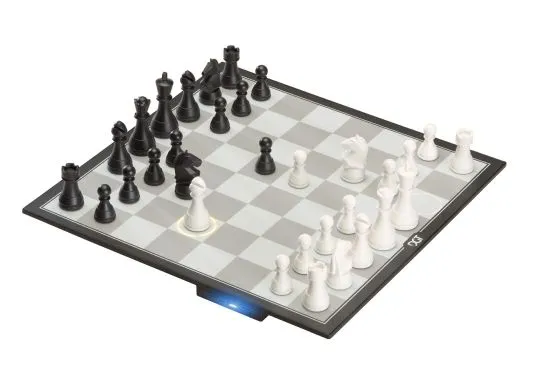 Free Worldwide Shipping
DGT Pegasus Chess Board (e-Board) - Wireless Bluetooth with USB Charger Play on an elegant DGT Pegasus across your favorite chess platforms without using any screens!$349.00
Free Worldwide Shipping
DGT Pegasus Chess Board (e-Board) - Wireless Bluetooth with USB Charger Play on an elegant DGT Pegasus across your favorite chess platforms without using any screens!$349.00
Best Resources and Tools for Solving Chess Puzzles
There are hundreds of great chess books out there that offer a great curated selection of chess puzzles, depending on what you are looking for and your level. I recommend Susan Polgar's book, Chess Tactics for Champions, for intermediate players or those who have already completed Everyone’s First Chess Workbook. Chess Tactics for Champions still separates the puzzles by tactic and pattern, so you can really drill specific patterns that you need to practice. You really will see yourself finding more forks in real chess games after completing the forks chapter. I also recommend Chess Tactics for Students as a good next chess puzzle book, and Chess - 5334 Problems, Combinations, and Games, which is a huge book of puzzles for those that love physical books.
Online Resources for Chess Puzzles
Nowadays, chess puzzles are just a click or tap away at all times. If you want free, endless online chess puzzles, then go to Lichess.org and check out their puzzles page. This is an excellent resource as you can do a random assortment of puzzles that will scale to your skill level, or you can pick puzzles that focus on an area or tactic that you want to improve. I also recommend different fun modes like Puzzle Streak, which has you try to get as many puzzles in a row as you can as they get harder and harder, or Puzzle Storm, which puts you on a timer as you do the same thing. Whatever helps you complete more puzzles is beneficial. Other options for online chess puzzles are chesstempo.com, chessable.com, and chess.com.
How Different Chess Puzzles Help You Learn
Tactics
When people think of chess puzzles, they tend to think of forks, pins, skewers, and discovered attacks. This is definitely a huge part of chess puzzles, and doing them will help you identify these tactics in games in a way that can change the game and win you ELO. But there are other kinds of chess puzzles as well.

Strategy
There are also chess puzzles that focus on positional sacrifices or improving piece activity. Most strategy books will include puzzles that help you identify these kinds of moves, but they are less common when just completing books or online resources.
-
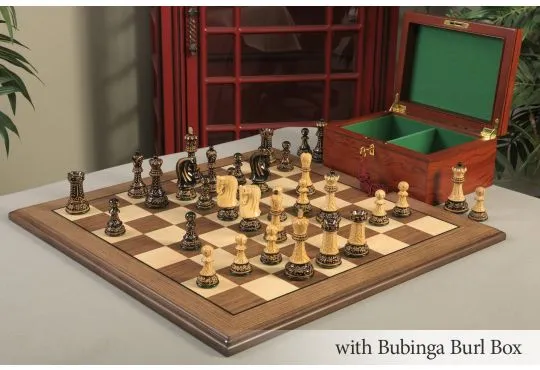 Free Worldwide Shipping
The Burnt Zagreb '59 Series Chess Set, Box, & Board Combination Enjoy Savings of 29% Off MSRP When Purchased as a Combination
Free Worldwide Shipping
The Burnt Zagreb '59 Series Chess Set, Box, & Board Combination Enjoy Savings of 29% Off MSRP When Purchased as a Combination$687.95
Starting at $489.00
To $568.95
Endgame puzzles
One great way to use chess puzzles is to practice technique and precision under pressure in the endgame. Calculation is hugely important in complicated endgames when you can’t move the pieces or draw arrows during a real game! So, practicing even the most basic of endgames can be a great use of chess puzzles. Most puzzle books or websites will have an endgame section, and drilling those positions will help you win even more games and give you confidence to take a game into a winning endgame.
Tracking Your Chess Improvement Through Puzzles
As you are implementing chess puzzles into your chess improvement and training plans, you will find that they are a great way to track your improvement. Not only online, where you can see your puzzle rating going up, but also just your speed of solving them. After weeks of puzzles, you will see how much faster you solve the same patterns. There will be more and more kinds of puzzles and patterns to learn, but you will also see your online and OTB ratings improve as you do more and more puzzles.
Inflated Ratings
I would advise against focusing too much on your puzzle rating on different online websites like Chess.com or Lichess, and instead focus on the time spent on those puzzles or the number of puzzles completed. Don’t go through the puzzles too quickly, make sure that you are taking your time, and don’t give up just because you don’t see the move immediately. Puzzle ratings can be very inflated and can give you a false sense of improvement at times, so find other ways to track your improvement, or at least be aware that solving a 2000 rated chess puzzle does not mean you will beat a 2000 rated player.
How to Solve Puzzles
Now, if you find that you are struggling to find the correct answer to different chess puzzles, or maybe you feel lost at the start of every puzzle, let me give you a few tips to help you find the right move, or at least know where to look. First, a few warnings of what not to do when solving a chess puzzle: Don’t move too quickly! Don’t give up and make the first move you thought of! If you’re unsure, try calculating. It can turn into more of a calculation exercise at that point, and that will be an important step in your improvement.
Don't Guess!
Don't try to guess the theme or purpose of the puzzle; just look for the best move, and then you will find the theme or pattern. If you immediately guess its a fork puzzle, you may miss a checkmate in one. Also, when you are playing a real game, you just need to always be looking for the best move, and you do that by looking through your forcing moves.
Forcing Moves to Win: Checks, Captures, Threats!
The first step when you encounter a chess puzzle is to examine the checks, captures, and threats. Using forcing moves helps narrow down your options and simplify your calculations, while also encouraging you to examine the best moves on the board. This is an invaluable skill to develop in chess, and it will help you avoid major mistakes and find checkmates.

Checks
A check is the most forcing kind of move. It’s the most forcing type of move you can make on the chessboard, as it requires your opponent to respond and get out of danger. Many tactics in chess center around checks, which is why the safety of the king and the opponent's king is so crucial. If you could identify every potential check in any position, I guarantee your rating would increase significantly.
Captures
After reviewing, you should scan the position for captures. When we capture an opponent's piece, we compel them to decide: do they let us keep the material we gained, or do they recapture? They are forced into making that decision or they already lose material.

Threats
A threat forces our opponent to respond or else we either checkmate them, win material, or gain some other advantage. It may not seem like a forcing move, but it forces your opponent to respond, and not be able to play a different move instead. If you look through your checks, captures, and then checks in every position, and every puzzle, then you will be on the right track to finding the answer to any puzzle.
Frequently Asked Questions
The best way to do a chess puzzle depends on who is solving it! I recommend trying puzzle books as well as online puzzle resources and seeing which one you enjoy the most.
Chess puzzles are a fantastic way to improve at the game. If you want to improve at chess, you should learn the patterns of all the different tactics and checkmates.
A chess puzzle is a position that requires finding the correct move or moves. Take your time and calculate until you find the right answer.
I recommend looking through your forcing moves first. This means looking through checks captures and threats, and often the move will be among those moves.
Getting a puzzle wrong is usually more of a sign of impatience than it is of a misunderstanding of chess. Take your time and calculate until you see the answer. If you don’t know the answer, you may still need to learn that pattern.


